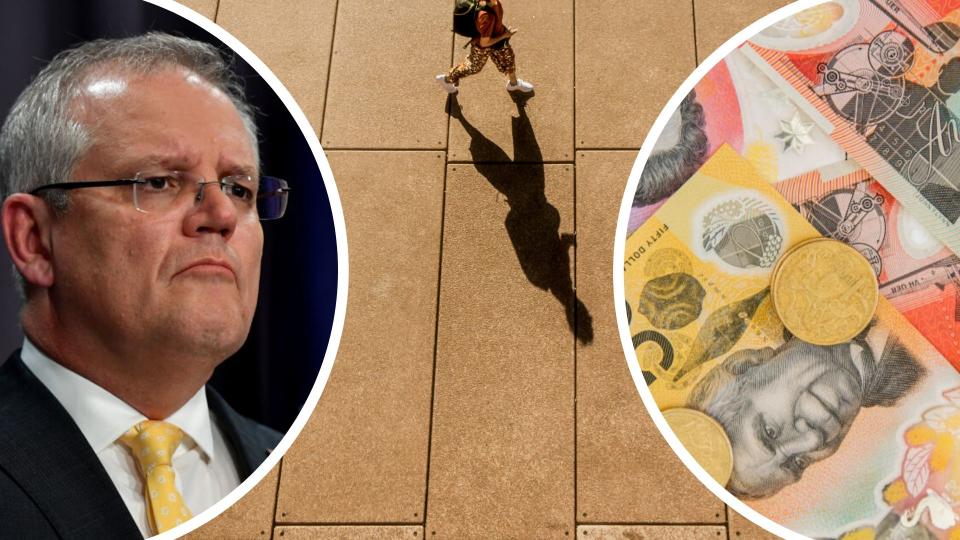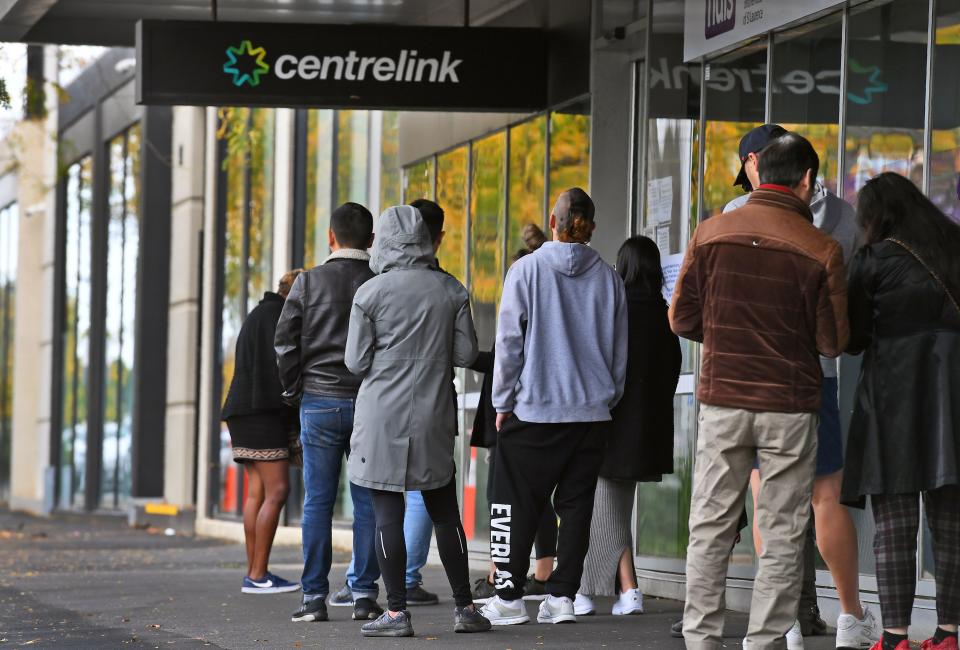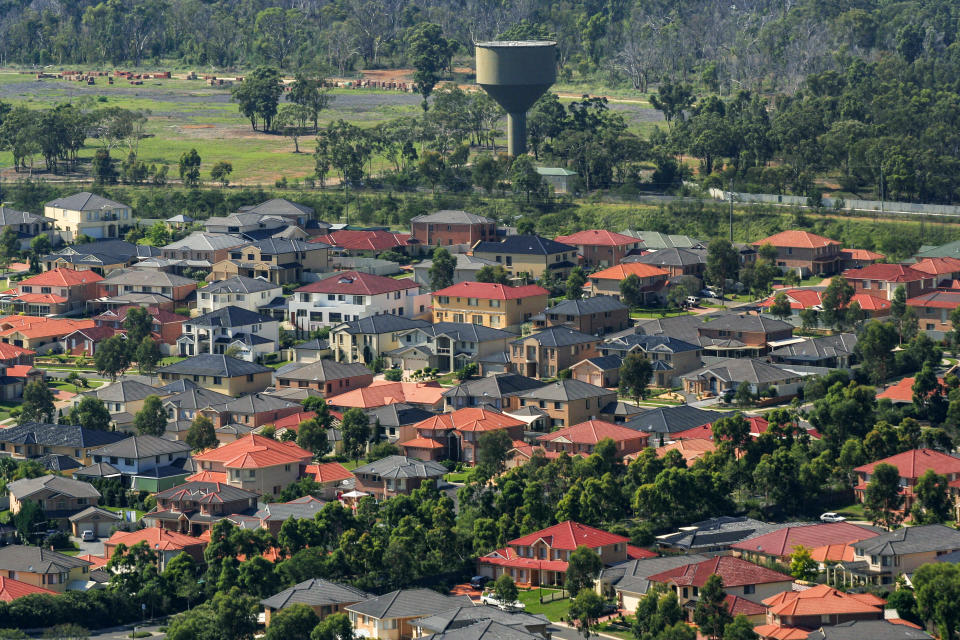How will we pay for coronavirus?

The Australian government will spend around $320 billion on economic stimulus measures to carry the country through, and out of, the coronavirus crisis.
Also read: Former PM Malcolm Turnbull on the key to economic recovery
Also read: How the coronavirus crisis will create the next million-dollar businesses
Also read: ‘Govt has failed’: World set to repeat Great Depression
To put that into perspective, the last annual federal budget was $500 billion.
That $320 billion sum is around 16.4 per cent of Australia’s gross domestic product (GDP), and includes spending until the end of the 2022-23 financial year.
It’s an eye-watering sum, and one that has many Australians asking: how do we pay for this huge debt?
“This coronavirus crisis has all but guaranteed the fate of the nation’s young people who haven’t got wealthy parents. Their entire professional lives will now be spent working in an environment of austerity – paying off a debt that stands to benefit the generation before them and the one coming after,” reads a satirical Betoota Advocate article.
While tongue in cheek, it reflects the current anxiety Australians are facing down over the nation’s economic future, and the future of working Australians in particular.
But do we actually face a future of austerity?

Not if we play our cards right, economists and policy experts told Yahoo Finance.
The ideal way to pay off this huge debt, according to Grattan Institute program director Danielle Wood, is to increase productivity to the extent where the debt just pays itself off.
“Government’s shouldn’t be rushing to pay that [debt] off in the near term. The economy’s going to be very fragile on the other side and the government should be looking to stimulate the economy, rather than shrink it through trying to consolidate the budget,” she said.
“When the economy is growing really strongly, debt will often just come down by itself.”
World War II left Australia with mountains of debt, but Australia’s baby boom and rebuilding activity meant the government didn’t need to worry as much about consolidating the budget.
“[The debt] was paid off by the growing economy. That’s the ideal outcome, to have really healthy economic growth.”
But Wood is sceptical that this is how it will play out.
Here’s the problem: Aussie GDP was already weak
Even before the dual bushfire-coronavirus crisis, Australian growth was lagging. In fact, former Treasurer Peter Costello in September last year warned Australia was already in a per capita recession.
“One of the significant drivers of growth in the Australian economy has been population,” Costello said, adding that that growth has hidden the weakness of the country’s underlying economic performance.
“If you convert all of our statistics, even GDP to per capita, you would find we probably have had recessions,” he said.
“But because we’ve had a growing population, the overall economy has been growing. I query whether we can continue that.”
Also read: 'Hard and unsexy': We need to do more than cut cash rate, says Peter Costello
Also read: Unlocking these parts of the economy could create $210 billion, 17,000 jobs
Now, six months later, coronavirus has largely stripped that veneer.
“We had quite low levels of growth in Australia, as one of the most developed countries, and were talking about whether we were in a period of secular stagnation,” Wood said.
It means that looking forward, Australia can probably expect some mix of productivity-boosting and fiscal consolidation measures.
But balance is the key.
“They will need to be looking at both taxes and spending for opportunities to do things in a way that won’t really punch a hole in the economy.”
A balancing act
Economist Stephen Koukoulas said the first goal is to get unemployment back below 5 per cent. This in itself is a significant task - millions of Australians have already been forced out of work, while economists predict unemployment will soar beyond 10 per cent.
One of the first steps to addressing this is to hike JobSeeker (formerly NewStart) and even consider edging up the Age Pension, Koukoulas said.
“Get money into people's pockets and into the economy.”
Beyond welfare, if we get more Australians back in work, that pushes wages higher and stimulates the flow of money through the economy, he added.
“[The government needs to] spend money on education and skills – there will be unemployed people who will need to have their skills brought up to date to allow them to rejoin the labour market,” he said.
And while Koukoulas believes the government will need to monitor the budget, policy will be skewed towards “getting things done”.
That includes building public sector housing, revamping the healthcare system and rebuilding a depleted public service.
One thing that helps is that the Reserve Bank of Australia has already indicated that the current interest rate will remain at its record low for a long time, helping business and household confidence. The more confident we are, the more we spend and the more businesses spend.
Barriers to productivity: Childcare, education and stamp duty

The Productivity Commission’s major Shifting the Dial 2017 report proposed a number of changes designed to boost productivity.
The commission said the full suite of reforms would deliver around $80 billion a year in financial gains. Prime Minister Scott Morrison has said in recent weeks that this report contains a number of policy measures the government is considering.
"We are looking at all of these things with fresh eyes, with very fresh eyes, with a view to what the post-COVID economy is going to look like globally and domestically to help them get back on their feet and grow the businesses and have a business-led recovery to put Australia in a stronger position in the future," he said.
"We need to go through this process at the moment of harvesting all of these important policy options and how they can be utilised to have an effective and sustainable and strong recovery on the other side of the coronavirus."
The report itself includes proposals such as a single volumetric tax on alcohol, changes to the way university fees are formulated and the removal of red tape within local councils.
But one of the main steps proposed by the report is a shift from stamp duty to a broader based land tax.
Stamp duty, Wood said, is just a “bad tax” that discourages movement and downsizing.
“That point, I think almost every economist in the country would get behind. It’s a big opportunity and one that should be high on the list.”
But there are a lot of other reforms aimed at boosting productivity that should be considered, like rethinking the education system, Wood said.
Australia needs to attract and critically - retain - good teachers to improve education outcomes. This in turn leads to more engaged citizens and better workers and jobs.
When it comes to workforce participation, Australia should also take a good look at the childcare system and the expensive barriers it poses to women returning to the workforce.
“We've really high childcare costs by the standards of most countries. We know that they create a really strong incentive for second income earners - mainly women - to move beyond part time work to go anything beyond three days a week work.
“Addressing those problems actually creates incentives for people to work more and actually grow the economy.”
But do we need a tax reform as well?
The government has pushed company tax reform, along with deregulation and industrial relations reform, as potential pillars of its coronavirus response.
But according to economist and former secretary of the department of industrial relations and the department of finance, Dr Michael Keating, there are some problems with that.
He described deregulation, changes to industrial relations and company tax reform as “an attempt to resuscitate a failed agenda from the past”.
The logic behind these reforms is that they give companies more cash to play with and can invest in their future and employees’ wages.
But if demand for business’ products doesn’t increase, the tax cut is just paid out to shareholders rather than investing in the future, Keating said.
“What the government needs to appreciate is that the recent poor growth record of the Australian economy, and most other advanced economies, is not because of a lack of supply,” he said.
“Instead, the problem has been a lack of demand, and that lack of demand is because of the increase in inequality of incomes and the pressures on household incomes from low wage growth.”
Instead, the government should focus on fast tracking tax compliance for larger corporations, Koukoulas said, naming a turnover tax as one way to support the budget.
Negative gearing, franking credits potential areas for reform
Wood agreed that tax reform is necessary.
She said the coronavirus crisis has only highlighted the imbalanced nature of Australia’s tax system.
“Our tax system is incredibly skewed towards collecting money from income taxes, and it’s particularly skewed towards income taxes from people of working age,” said Wood.
“At the moment, because of tax concessions that are available to older Australians, particularly super tax concessions and things like refundable franking credits and the seniors and pensioners tax offset, an older Australian pays about half as much tax as a younger Australian on the same income,” she said.
And this difference is difficult to defend, especially when it comes to economic outcomes over the last three decades.
“We’ve seen older Australians’ wealth has grown really strongly, whereas younger Australians’ wealth hasn’t really changed.”
However, reforming superannuation tax concessions would be more effective than changing the way franking credits operate, she said.
“But somehow or another we need to look at addressing the imbalance that has emerged in the tax system.”
And the future?
There are two ways the economic recovery can go.
The first, Wood said, is one where budget consolidation is priority number one. The outcome of that is sluggish productivity growth and some tough decades for younger Australians.
“If we think about who has really borne a lot of the economic pain here, it’s younger people, people on lower incomes, people working in accommodation, food services and the arts and retail that have lost their jobs because of this crisis.
“It would be a shame if the decisions that we made on how to improve the budget in the long term were to fall disproportionately on that same group.”
But if Australia plays its cards right, there are also massive opportunities.
She said the question now is whether the government’s current culture of cooperation remains into the rebuilding period.
“We could come out of this a smarter country, an economically more prosperous country and potentially even a more socially harmonious country,” she said.
“There is a payoff from doing some of these hard things.”
Follow Yahoo Finance Australia on Facebook, Twitter, Instagram and LinkedIn.

 Yahoo Finance
Yahoo Finance 

